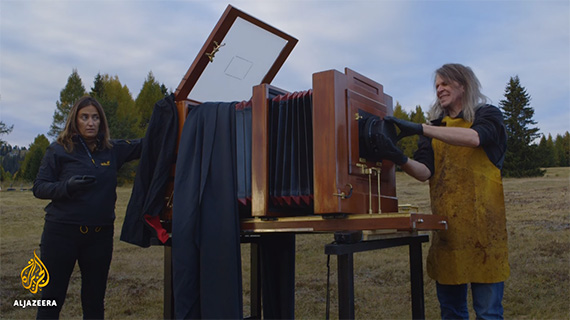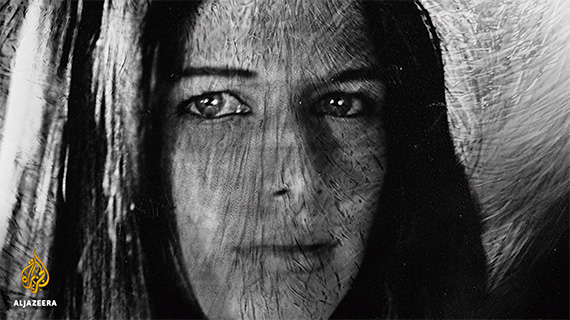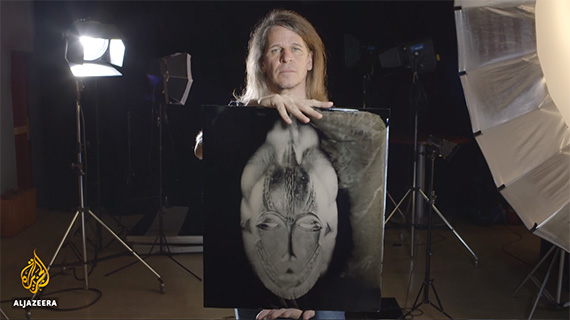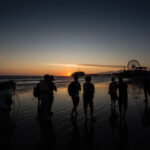Conflict photographer Kurt Moser has travelled the world shooting war zones for more than 30 years. He has been through and captured scenes that no one should ever see. That has driven him to pursue something completely different: beauty. He now spends time capturing images of the Italian countryside. His favorite photography tool is a giant wooden camera that exposes a shimmering silver glass sheet:
Moser was born and grew up near the Italian Dolomites. That’s probably why he shares such a love affair with this place and why he takes the pain to photograph these beautiful mountains using this archaic process.
The technique that Moser uses is known as ambrotype. It was developed by Frederick Scott Archer back in 1850. The technique was named as such because in Greek the word ambrotos means immortal. The inventor of the process probably thought that his images would last forever.
The ambrotype process involves coating a fine black cathedral glass sheet using a collodion emulsion that is carefully mixed by hand. It’s produced using gunpowder, cotton powder, and ether, as well as different salts. Then the whole sheet is dried. Afterwards the sheet is placed in a silver bath. The sheet absorbs the silver crystals and is ready to receive light.
Once an exposure is made you have about five minutes to develop the sheet. Even one second of delay could have catastrophic implications, completely ruining the sheet. Once the sheet is successfully developed you fix it and varnish it.
The process is archaic, but after the long and intricate series of steps what you get is a satisfying feeling when the image slowly appears like magic.
“It’s a complicated system. Sometimes I was on the edge of saying, ‘Come on forget about it.’ But then there were photographers in 1850 that were able to work with this, so why should I not be able?”
Moser shoots not only landscapes but also portraits. All his portrait images are stunning and life like, giving a kind of insight into the person being photographed that’s impossible with any other photography techniques.
He shoots only one photograph in three days. He uses light that is normally not associated with photography: UV light, and that is what makes things a bit more interesting.
“Other people still don’t understand what I’m doing. For them it’s completely crazy what I’m doing. In a way they are right because you kind of risk your whole existence just to follow a dream. There is no guarantee that it will work. I don’t have an insurance. I am living my life today because I have no idea if in 10 years I am still alive. I have to live my life now.”
Like This Article?
Don't Miss The Next One!
Join over 100,000 photographers of all experience levels who receive our free photography tips and articles to stay current:









Love ambrotypes. Anyone making them in the U.S. today?
Bravo!!
Thank you for sharing our project !!!